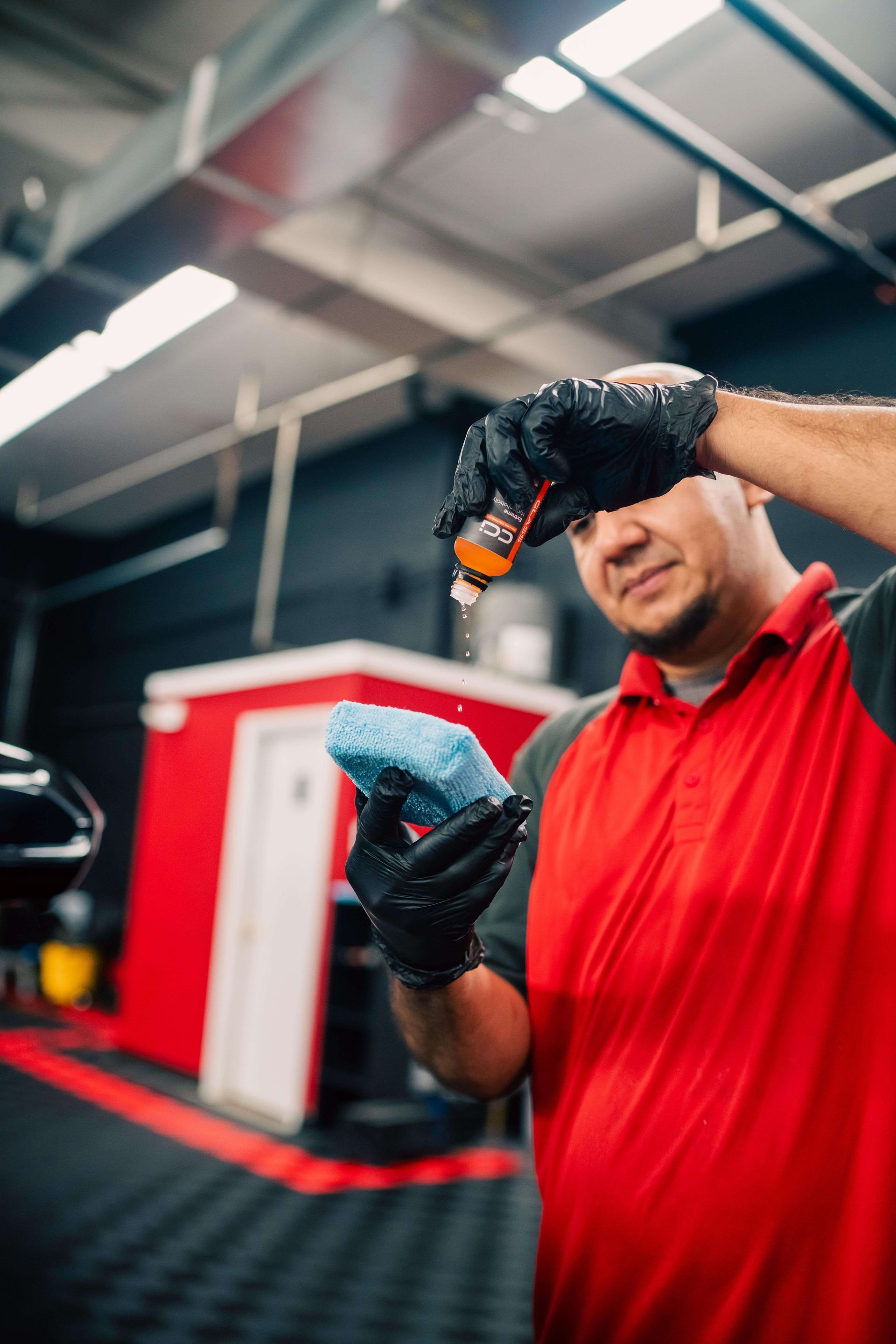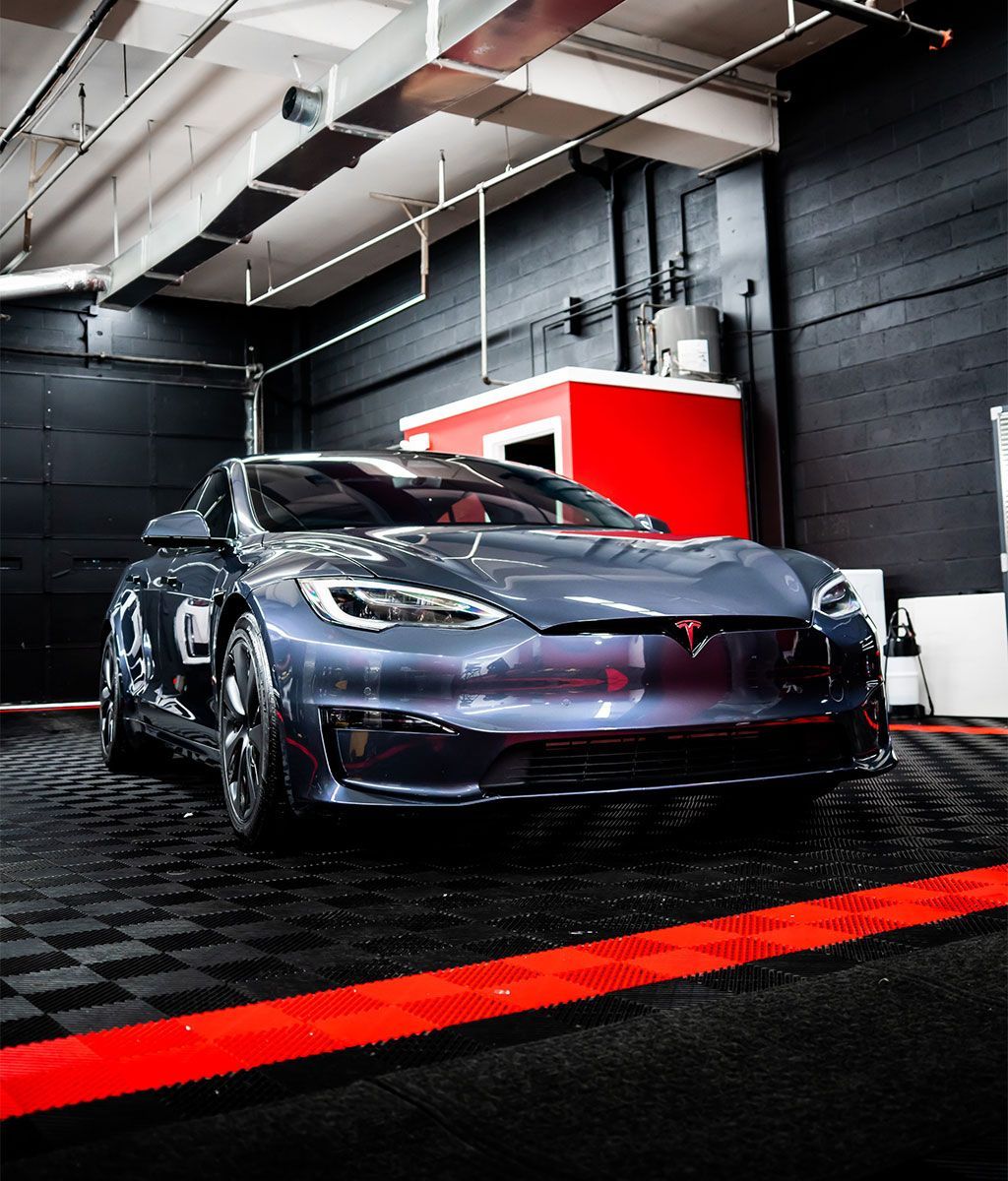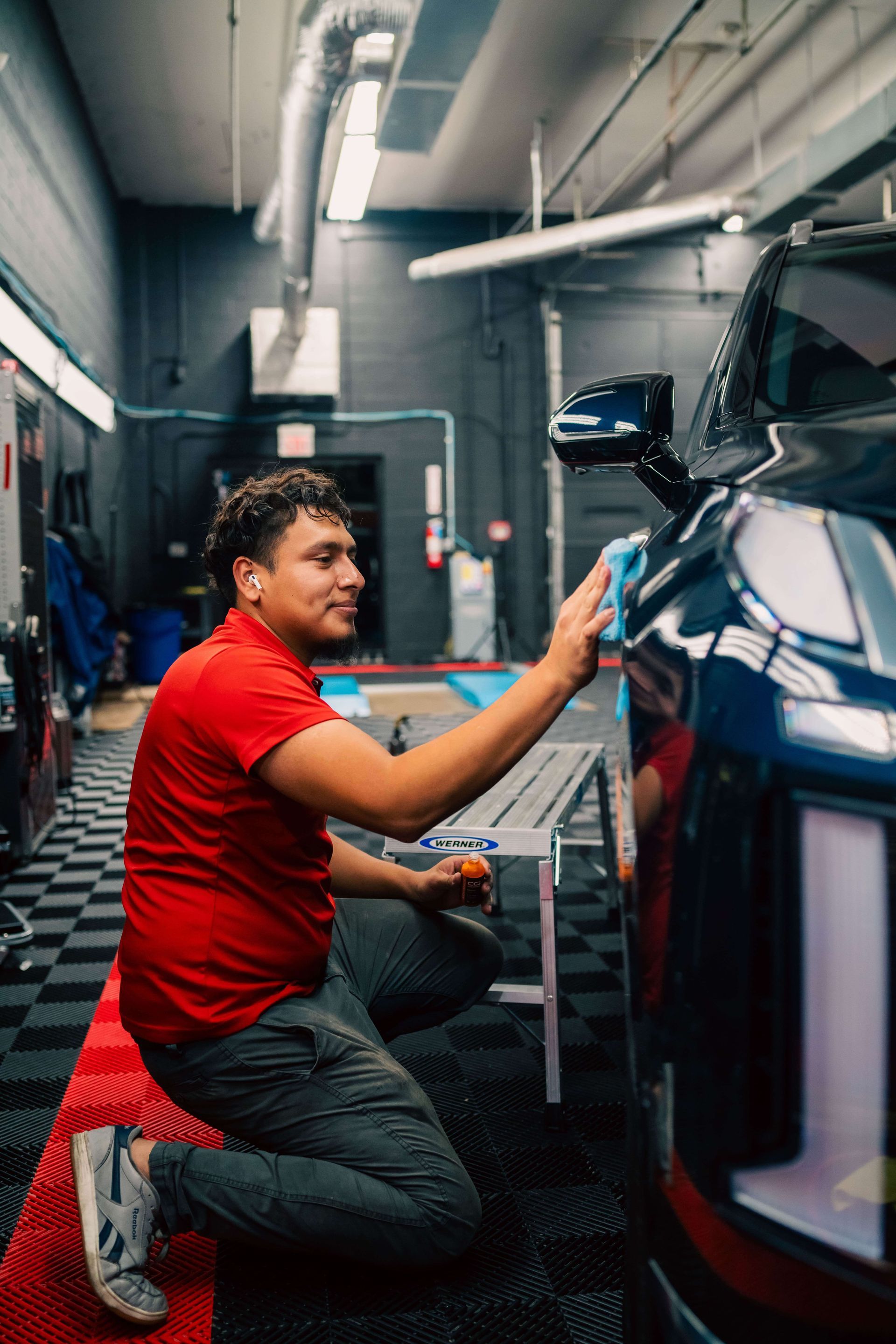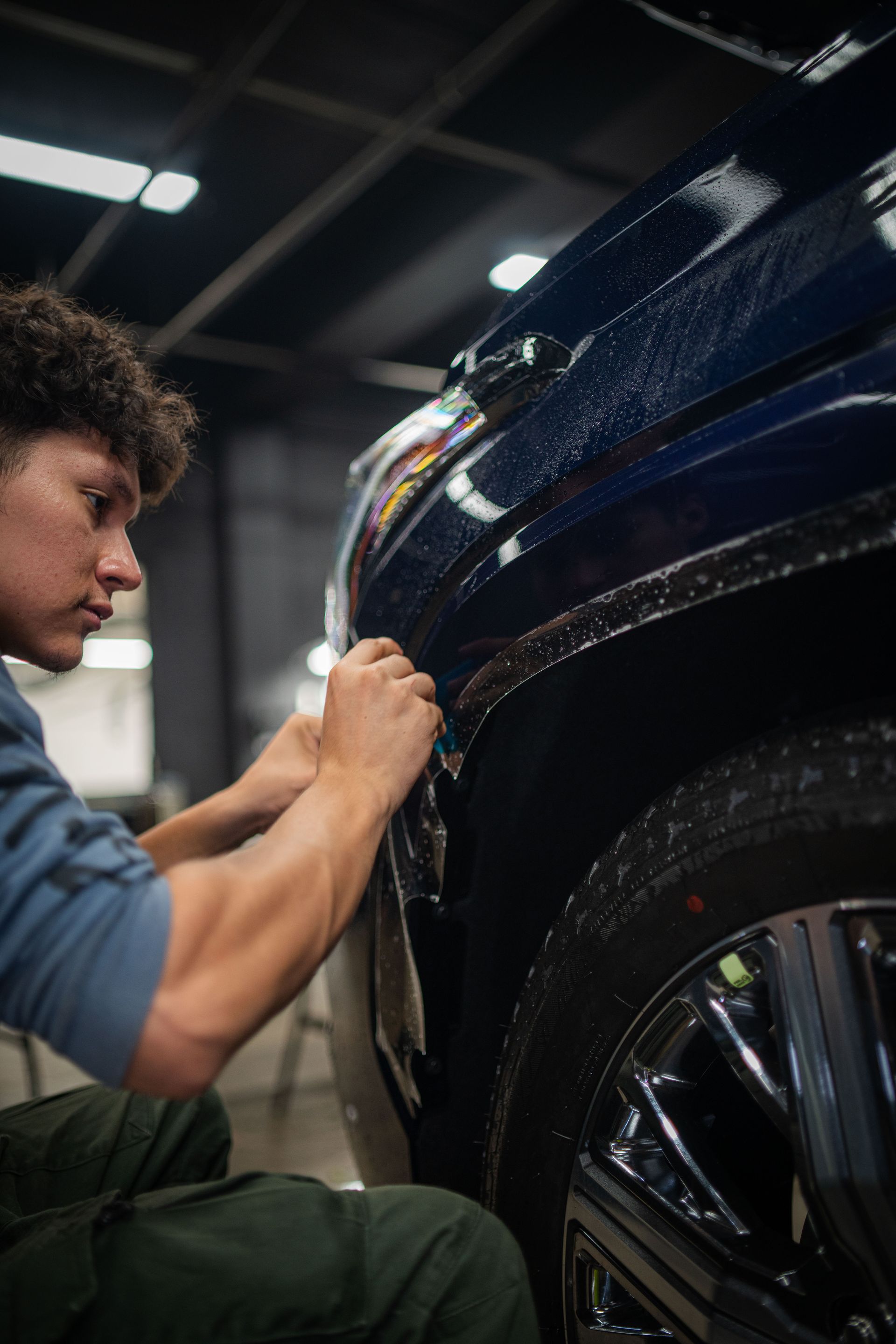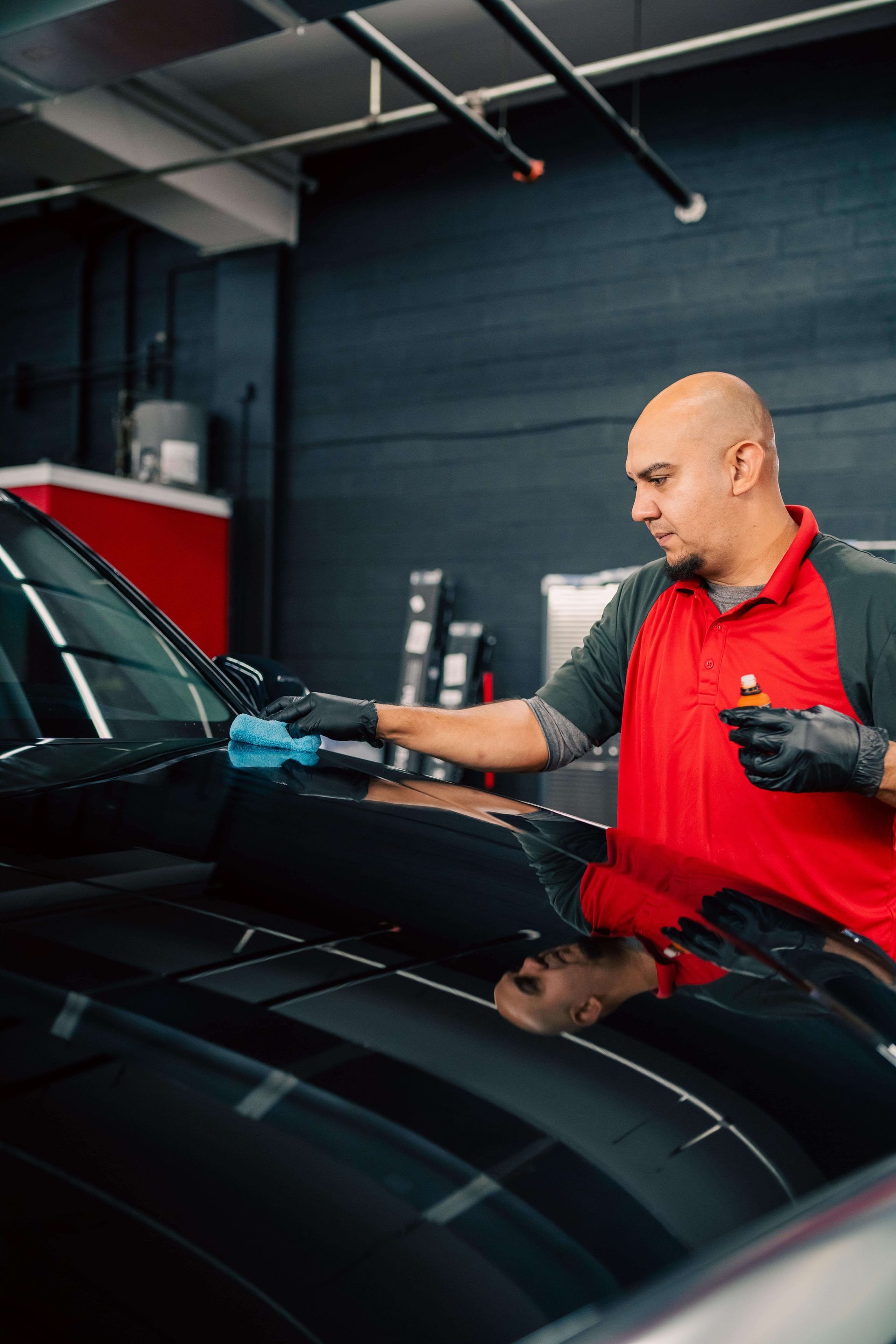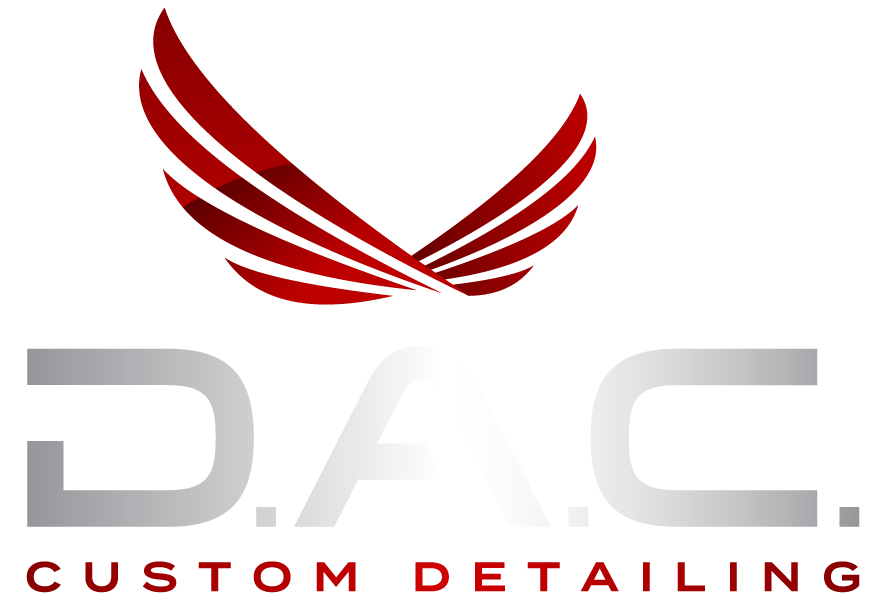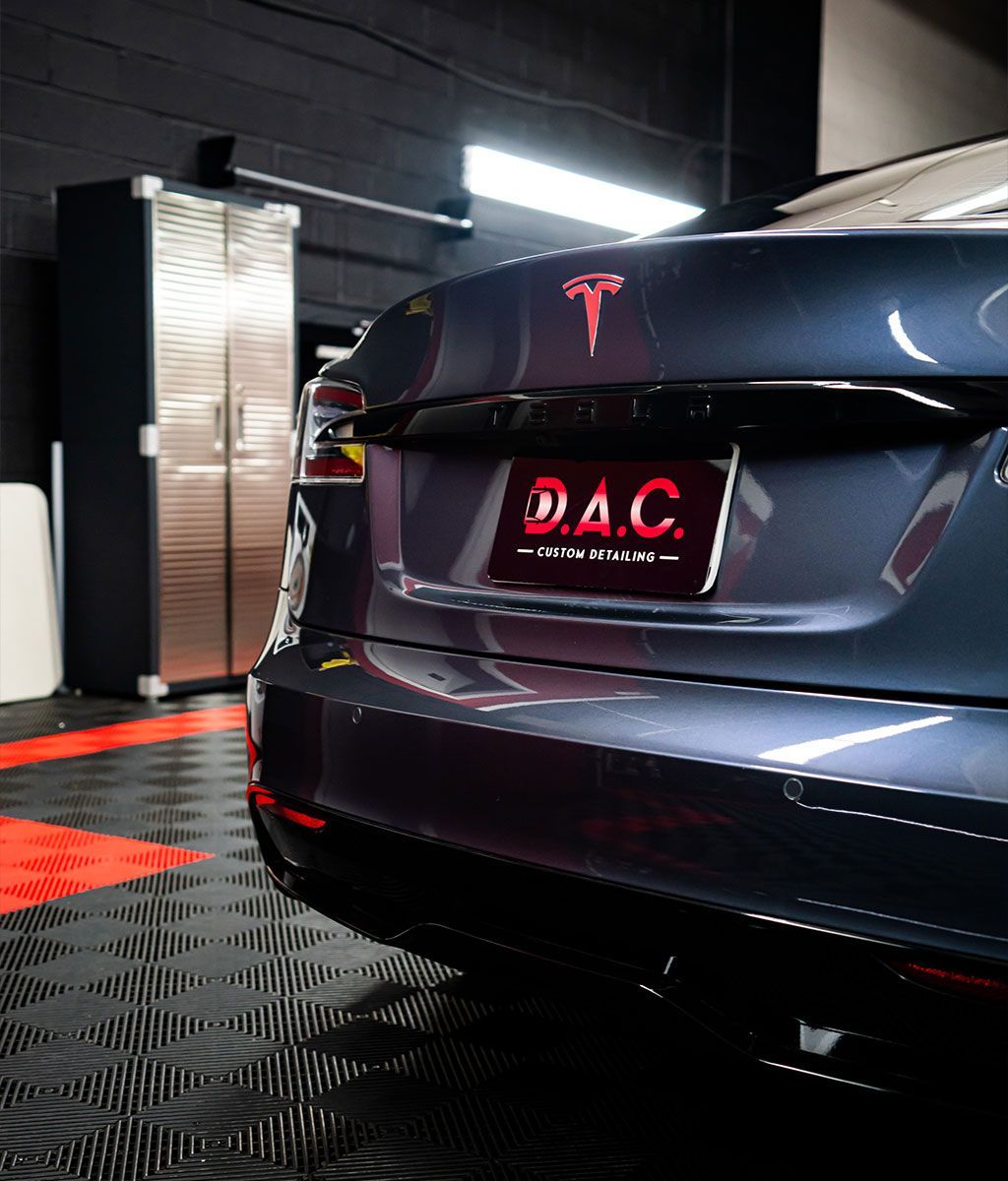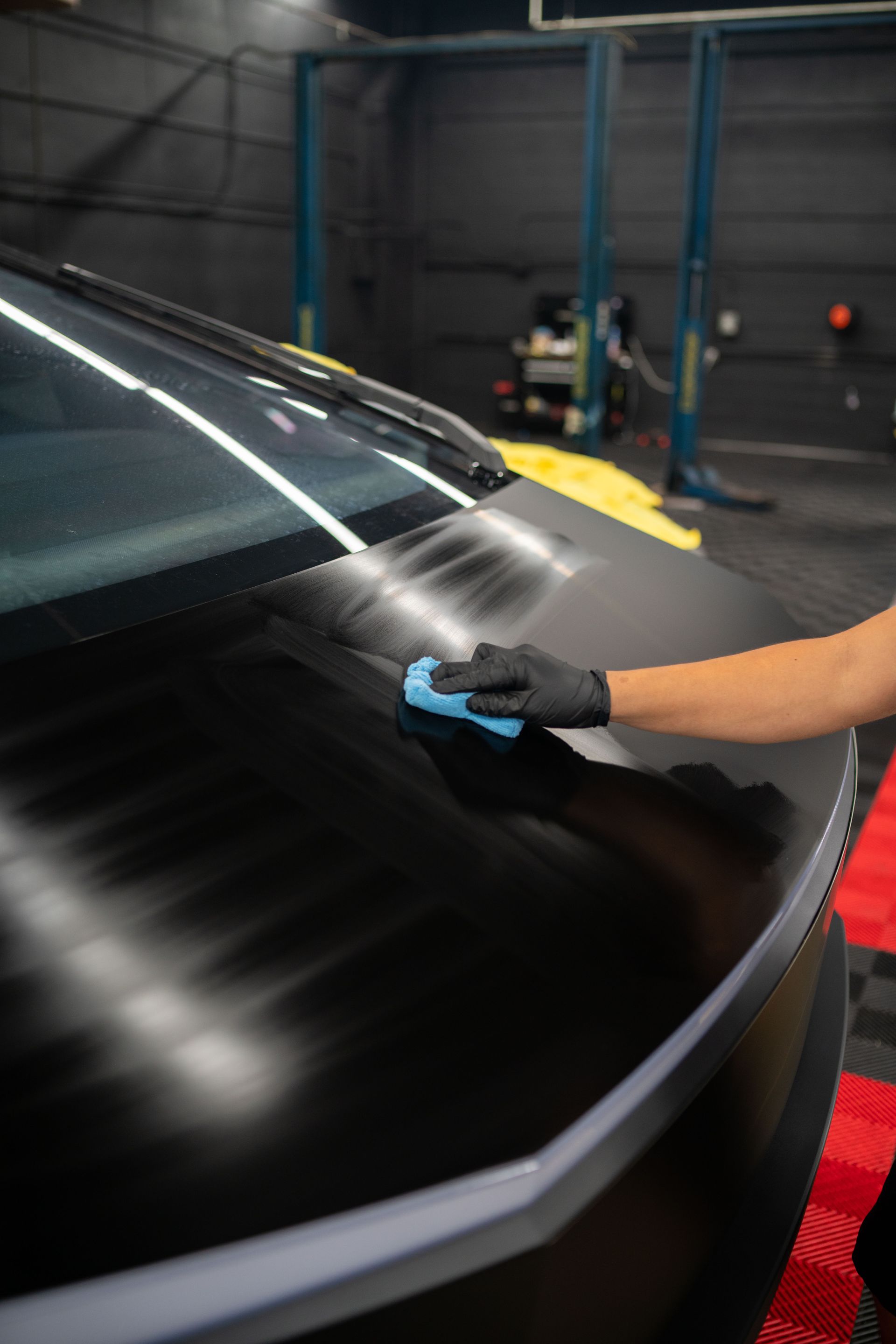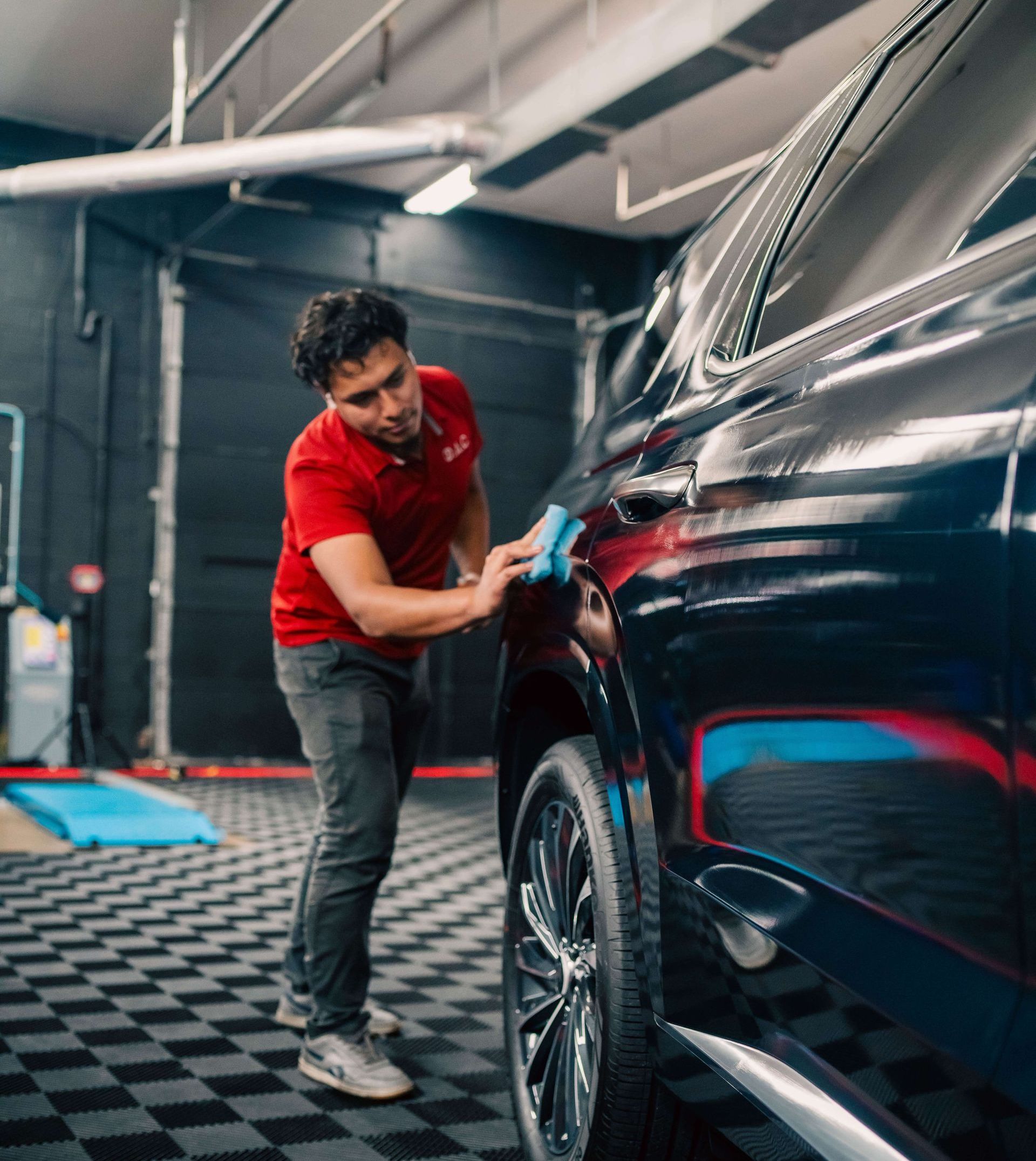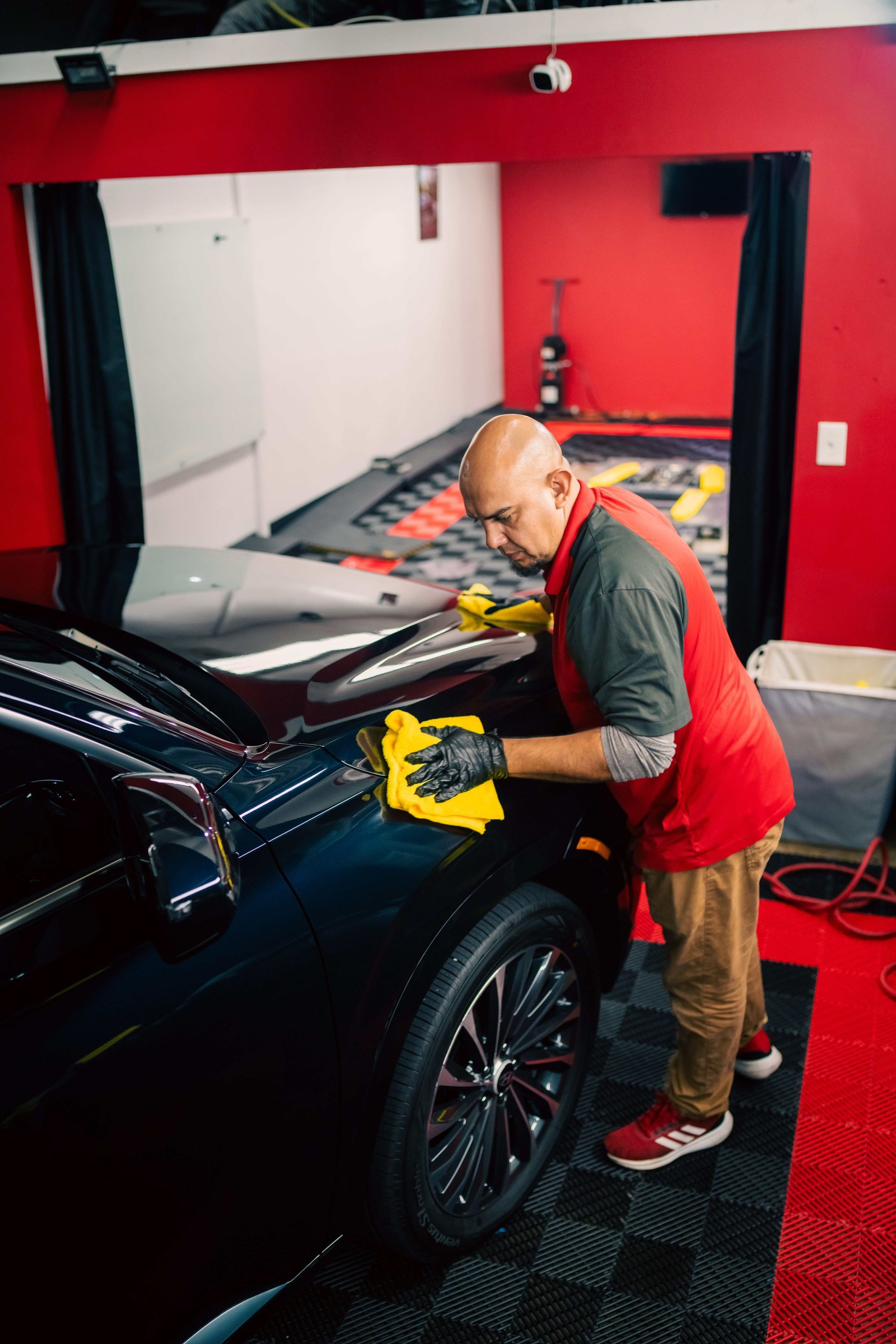REVIVE, PROTECT, MAINTAIN
When it comes to taking care of your car, protecting its paint is often an afterthought. Think about it: every day you're driving through dust, debris, and unpredictable weather—every single thing can chip or scratch that shiny exterior. But there's a simple remedy that can save your car's beauty and keep it looking fresh for years: paint protection film, or PPF. By putting this clear film on your vehicle, you're investing in a practical shield against life's little accidents. In this article, we'll dig into the best ways to use PPF, explore its benefits, and discuss how to make the most of this protective layer so your car stays as stunning as the day you bought it.
The best ways to protect your car with paint protection film (PPF) include applying it to high-impact areas such as the front bumper, hood, and side mirrors where rock chips and scratches are most likely to occur. It's also advisable to have the PPF professionally installed for optimal adhesion and coverage, ensuring that it is properly cleaned beforehand to prevent imperfections beneath the film.
Overview of Paint Protection Film
Paint Protection Film (PPF) is a clever solution that provides a layer of defense against the everyday wear and tear your car endures. This clear thermoplastic urethane film adheres directly to a vehicle's exterior surfaces, acting as a shield against the hostile environment outside. Imagine driving on a busy road, surrounded by gravel, bugs, and debris—PPF plays an invaluable role in protecting your vehicle’s paint from chips, scratches, and dings that can mar its beauty.
What makes PPF particularly appealing is its self-healing property. Under the right conditions—like exposure to heat or sunlight—minor scratches can disappear like magic. Picture this: you park your car, only to find a tiny scuff when you return. With PPF, you just need to warm the area with a cloth and watch as the scratch fades away. The ease of maintenance this offers can save countless hours when it comes to detailing.
- Protection: It effectively guards against rock chips, scratches, swirl marks, and corrosion from elements like bird droppings or road salt.
- Self-Healing: Some minor surface abrasions can heal themselves under heat or sunlight.
- Versatile Thickness: PPF comes in varying thicknesses—from 6 mils up to 10 mils—allowing users to choose based on their specific driving conditions and preferences.
While thicker films provide enhanced durability, they may also be slightly more noticeable on the vehicle's surface. It's vital to weigh the pros and cons; thinner films offer concealment but less protection against significant impacts. Your decision should align with how you use your vehicle—regular commuting or off-roading adventures—and what you're willing to invest in maintaining its aesthetic appeal. As you consider incorporating PPF into your car's maintenance routine, deciding whether you'll tackle the installation yourself or enlist the help of experts becomes essential for achieving optimal results.
Professional vs. DIY Application
When it comes to applying Paint Protection Film (PPF), choosing between professional installation and a DIY approach features distinct advantages and challenges. Professional installation is often seen as the gold standard, providing optimal adhesion and a seamless finish. The assurance that your PPF will be installed by trained experts who use specialized tools can make a significant difference in the longevity and performance of the film, especially when considering complex curves on vehicles. While the costs can range from $500 to $2,500 depending on coverage area, many find peace of mind in knowing they’re getting top-notch service.
However, going the DIY route also presents an appealing option, particularly for those on a tighter budget. A full DIY kit can cost anywhere from $100 to $500, making it an attractive alternative if you're willing to put in the effort. Yet, this method isn’t without its hurdles. The primary challenge lies in ensuring a clean surface before application and avoiding air bubbles that can ruin the appearance of the film. For instance, dust or dirt particles lurking beneath the film can lead to peeling or misalignment over time.
Consider Your Skills
The success of a DIY project relies heavily on your skills and attention to detail. If you've got a steady hand and possess some crafting know-how, you might just find satisfaction in tackling this project yourself! You’ll also develop an intimate relationship with your vehicle’s surface as you meticulously smooth out every bubble. However, if precision isn’t your forte or if you lack patience, opting for professional installation may save you future headaches.
Remember, preparation is key regardless of which method you choose. Prioritize quality time by prepping your surface with soap and water or using specialized cleaners; this first step is crucial for achieving that flawless finish you're after. Your choice should reflect not just your budget but also your confidence in your skills and willingness to invest time into ensuring your car retains its beauty. After determining the best application method for you, understanding where to apply protection can significantly enhance your car’s defense against environmental hazards.
Key Areas to Cover on Your Car
When considering where to apply paint protection film (PPF), it's essential to focus on high-impact zones that face the most wear and tear. These pivotal areas include the front bumper, hood, side mirrors, and door edges. Each of these sections is particularly prone to damage from road debris, scratches, and UV exposure. For instance, did you know that roughly 70% of front-end damage occurs on the bumper? This makes it one of the top contenders for PPF coverage.
The hood also faces its fair share of challenges, accounting for about 60% of paint damage due to constant exposure to road chips and harmful UV rays. By protecting these areas, you're not only preserving the car's aesthetic appeal but also preventing costly repairs down the line. Sports cars, which often have a sporty design and lower ground clearance, should consider expanding the PPF coverage beyond these typical areas. It’s advisable to extend it toward the side skirts and lower rear bumper. These regions are more exposed and vulnerable due to their proximity to the road; they can easily collect grime and debris.
While full-body coverage may seem excessive for daily drivers, it’s worth contemplating for premium or luxury vehicles where repairs can be exorbitantly costly. The investment in coverage can pay off handsomely if it saves you from needing extensive touch-ups or a complete repaint later. In regions where environmental factors pose extreme threats—like sand storms or corrosive road salt—the added layer of PPF becomes even more beneficial.
Taking a strategic approach by focusing on critical points prone to damage can help safeguard your vehicle’s integrity while ensuring it looks its best for years. Considering these key areas lays a strong foundation for understanding the comprehensive advantages offered by protective layers like PPF. Let's transition into exploring the various benefits that this investment provides car owners.
Benefits of Using Paint Protection Film
One key advantage of PPF is its ability to shield your car from various forms of physical damage. Imagine driving down a gravel road or even just on a busy city street, where debris can suddenly fly up and scratch your car’s surface. PPF acts as a tough barrier against rock chips and scratches—protecting that delightful finish you worked so hard to maintain. The financial benefits are apparent; by investing in film now, you can avoid hefty repair bills later when those small chips would otherwise accumulate and worsen over time.
Another noteworthy benefit lies in the self-healing properties incorporated in modern formulations of PPF. Many of these films have been designed to respond to heat, allowing minor scratches to disappear when exposed to warmth from the sun or by using a heat gun. This capability adds layers to your protection and not only keeps your exterior looking fresh but also helps preserve its value; according to industry experts, around 75% of PPF users report noticeable reductions in the visibility of scratches and swirl marks, making their vehicles look newer for longer.
It’s quite remarkable how technology has made such advancements that we can enjoy a vehicle's smooth and pristine look with minimal effort! Moreover, PPF provides excellent UV protection, blocking up to 99% of harmful rays. These rays are notorious for causing paint fading and oxidation over time—two culprits that can dull the shine of your vehicle's exterior. By applying PPF, you're effectively extending the life of your paint while enhancing its vibrancy. It's like giving your car a long-term sunscreen that actively fights against damage and degradation.
Beyond aesthetic appeal, there's also a significant payoff in terms of resale value. Vehicles fitted with PPF can retain up to 15% more of their original value compared to those without any paint protection, as the film helps maintain pristine looks and prevents costly repairs before you decide to sell. In today’s market, where every percentage point counts against depreciation, PPF presents a compelling case for protecting your investment in every sense.
Finally, let’s touch on convenience. Unlike traditional wax, which requires frequent reapplication, most quality PPFs do not need extensive maintenance once applied. With occasional washes and care—instead of labor-intensive detailing—PPF allows you to enjoy your vehicle while knowing it's receiving top-notch protection without constant effort on your part. As we transition into understanding what kind of financial commitment this protective solution entails, it becomes crucial to explore both the expenses involved and its overall affordability.
Costs and Affordability
The cost of PPF can seem daunting at first glance, but breaking it down helps illuminate its value. Generally, prices vary widely based on several factors such as film quality, coverage area, and professional installation. For instance, opting for a high-quality film to cover an entire vehicle could run you upwards of $5,000. This might seem steep, particularly if you’re looking at protecting an older model. However, when compared to potential repair costs from chips and scratches over time, that price may start to look more reasonable.
It's essential to evaluate your options based on your vehicle's age and condition. If you're driving something like the 2025 AWD Limited Sienna with modern lines and paint finishes, investing in PPF makes practical sense to protect your car's aesthetic and resale value. On the other hand, owners of older vehicles may find that the upfront costs simply don't add up against their car's overall value. Many car enthusiasts argue that the high initial expense isn't justified for older vehicles; however, they also recognize that newer or high-value cars are likely to appreciate in resale value when preserved correctly.
To navigate these costs without overwhelming your budget, consider starting with partial coverage. Many drivers prioritize high-impact areas—places like the hood or door cups—that are most susceptible to damage. This strategy allows you to optimize protection while reducing upfront expenses. Over time, you can gradually expand coverage as finances allow or as your commitment to maintaining your vehicle grows. Once you've made the decision about how much coverage suits your needs best, remember that applying PPF is only one part of the equation; ensuring proper maintenance will truly maximize its benefits and lifespan.
Long-term Maintenance Tips
One of the first steps in maintaining your PPF is to wash your car regularly. Unlike traditional wax, which may wear off after some time, a well-maintained PPF can last longer with proper care. Use a pH-neutral car shampoo that respects the delicate surface without causing damage. Automated car washes with brushes can be particularly harmful; they scratch the film and compromise its integrity. Instead, consider hand washing whenever possible for a gentler approach.
However, it’s not just about how you wash; it's also about what you wash with. Avoid harsh chemicals at all costs. Abrasive cleaning agents or solvents might seem like quick solutions, but they create micro-scratches that diminish both the effectiveness and appearance of your PPF over time. Stick to products specifically designed for clear films or mild soaps that won’t strip away the protective qualities of your coating.
In the unfortunate event of minor damages, timely intervention is key. If you notice any lifting edges or small imperfections on your PPF, address these issues immediately. Small problems can escalate quickly if left unattended, leading to more significant damage and potentially costly repairs. Keeping a watchful eye and acting swiftly ensures that your investment remains safe and sound.
After washing and inspecting, drying becomes the next critical step. Proper drying techniques are essential to keep your film spotless. Rather than air drying, which can leave unsightly water spots behind, gently pat your surfaces dry with a microfiber cloth. This technique removes excess water and minimizes the risk of scratches from rough materials. To further enhance the lifespan of your PPF, applying a sealant or wax specifically designed for use on PPF is highly recommended. This additional layer will bolster its resilience against scratches and dirt while giving your vehicle an impeccable shine that turns heads every time you drive by.
By following these straightforward maintenance tips, you'll significantly prolong the life of your paint protection film while enhancing its appearance—allowing you to enjoy both peace of mind and a beautiful vehicle for many years to come. In summary, taking care of your paint protection film (PPF) not only protects your investment but also enhances the overall aesthetics of your vehicle. With consistent maintenance and attention to detail, you’ll keep your car looking brand new for an extended period.
Premium PPF in Alexandria, VA
When it comes to keeping your vehicle looking flawless, D.A.C Custom Detailing offers top-tier paint protection film (PPF) services in Alexandria, VA, designed to defend your car against the elements. Our expertly applied PPF safeguards your car's paint from chips, scratches, and fading, preserving its value and shine. Trust our experienced team to provide unmatched precision and protection. Ready to shield your vehicle with the best in the business? Contact D.A.C Custom Detailing today to schedule your PPF installation and give your car the ultimate defense!
Share with friends
